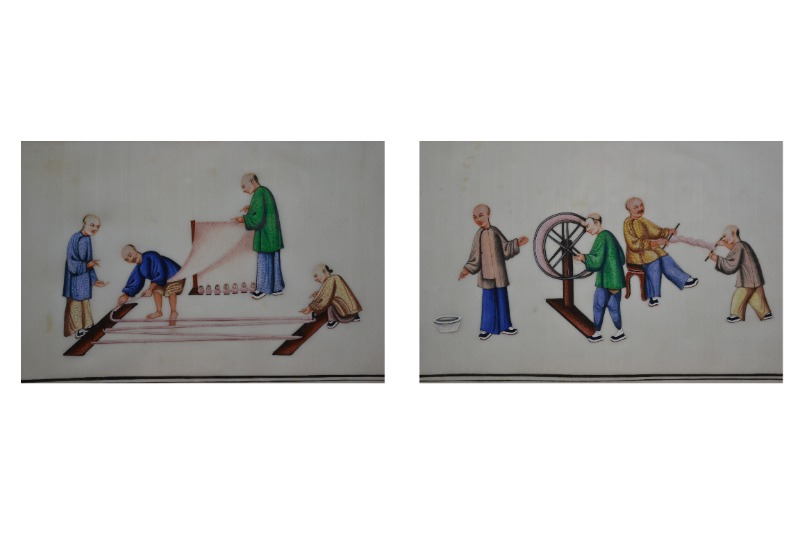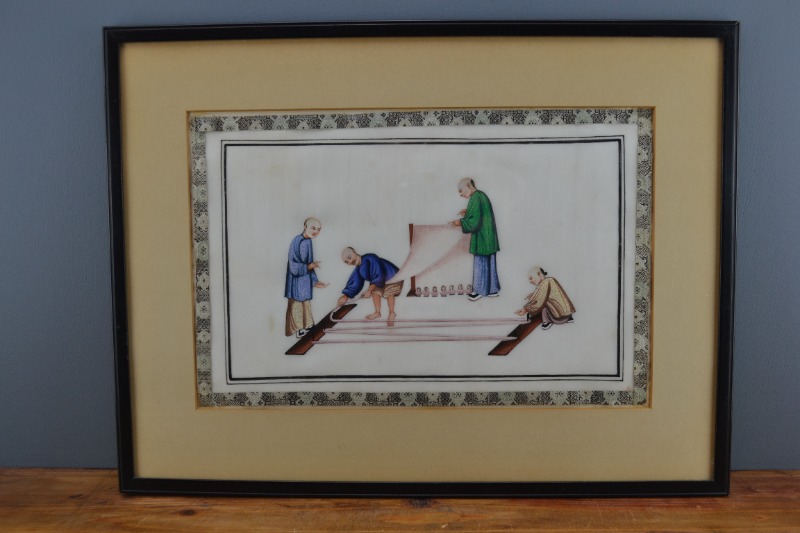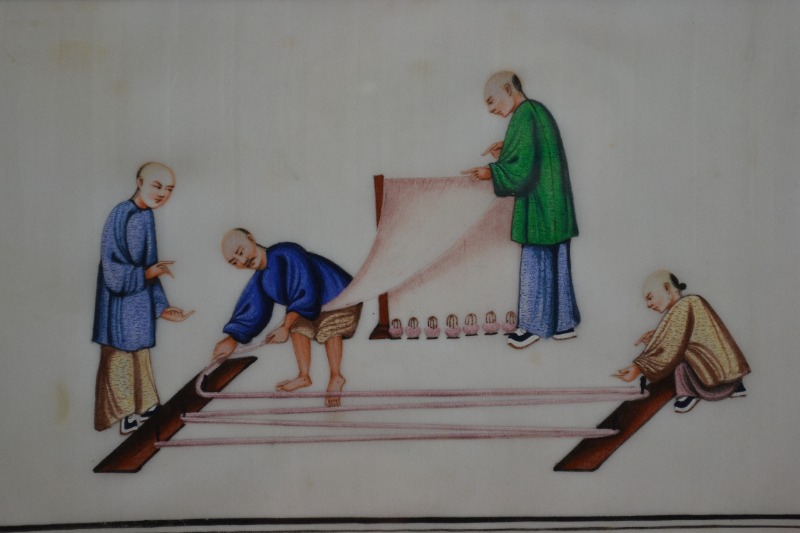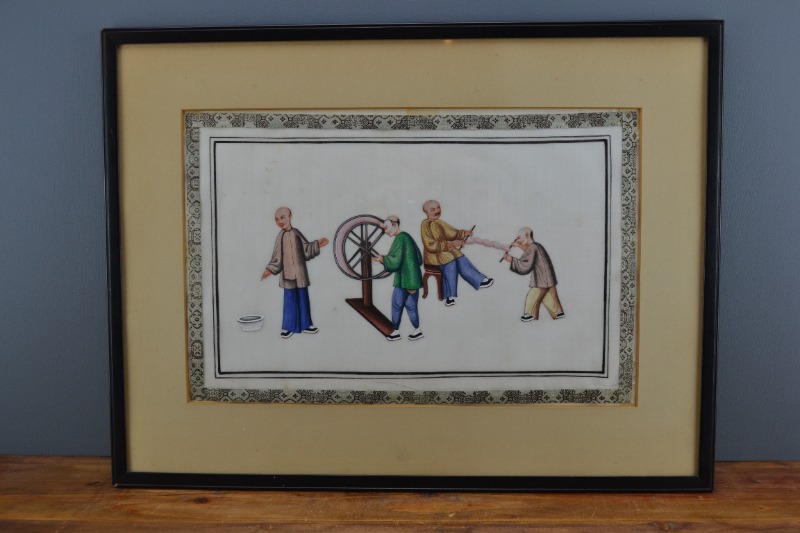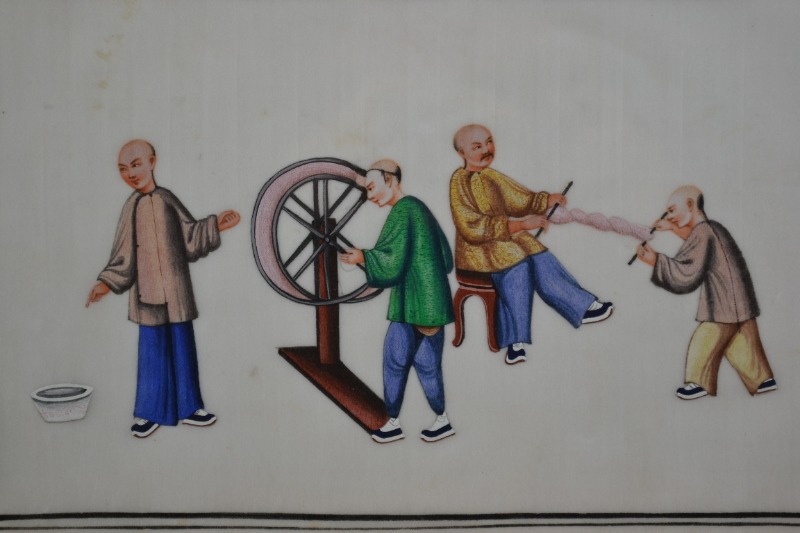Pair of Chinese Pith or Rice Paper Gouache Watercolour Paintings of Silk Workers, 1850-1890
Age:
1850-1890
Material:
Painting
Dimensions:
Each Image: 32cm x 20cm
Each Frame: 47cm x 36cm
Each Frame: 47cm x 36cm
Shipping:
Standard Parcel
Price:
SOLD
Two Chinese gouache watercolour paintings depicting scenes from the silk trade, dating from the second half of the 19th century. The first depicts the drying process, the second winding the silk thread onto a spool, surrounded by an original silk ribbon and Edwardian frame. The label on the back is for D.B. Murray, who was located at 22 South St, Perth between around 1899 and 1912.
Pith has a tendency to become brittle with age, but these are still in very good condition with a couple of small tears to the edge of one picture and very minor foxing. The colours are still bright.
Access to China was restricted during the first part of the 19th century to the trading port of Canton (Guangzhou). With visitors looking for souvenirs, Canton-based artists turned to a local product which was cheap and plentiful, a small evergreen tree called Tetrapanax papyrifer. Slices of the white pith of this tree had traditionally been used to make artificial flowers and it was found that its velvet texture lent itself well to the application of watercolours. The oldest known Chinese pith watercolours date from the mid-1820s. The artists used gouache - watercolours with an added white pigment – and often applied it to the back of the paintings as well to increase opacity. Pith absorbs water so the paint layer is raised, creating an attractive embossed surface. The pith paintings were often bound in albums, and usually covered a single subject. These pictures are from an album of 10, describing the process of making silk. A similar set can be found in the National Library of Australia (Record/6610509). Pith painting flourished between the 1820s and 1860s, but declined over the course of the century as photographs and picture postcards became available as mementos of a trip to China.

